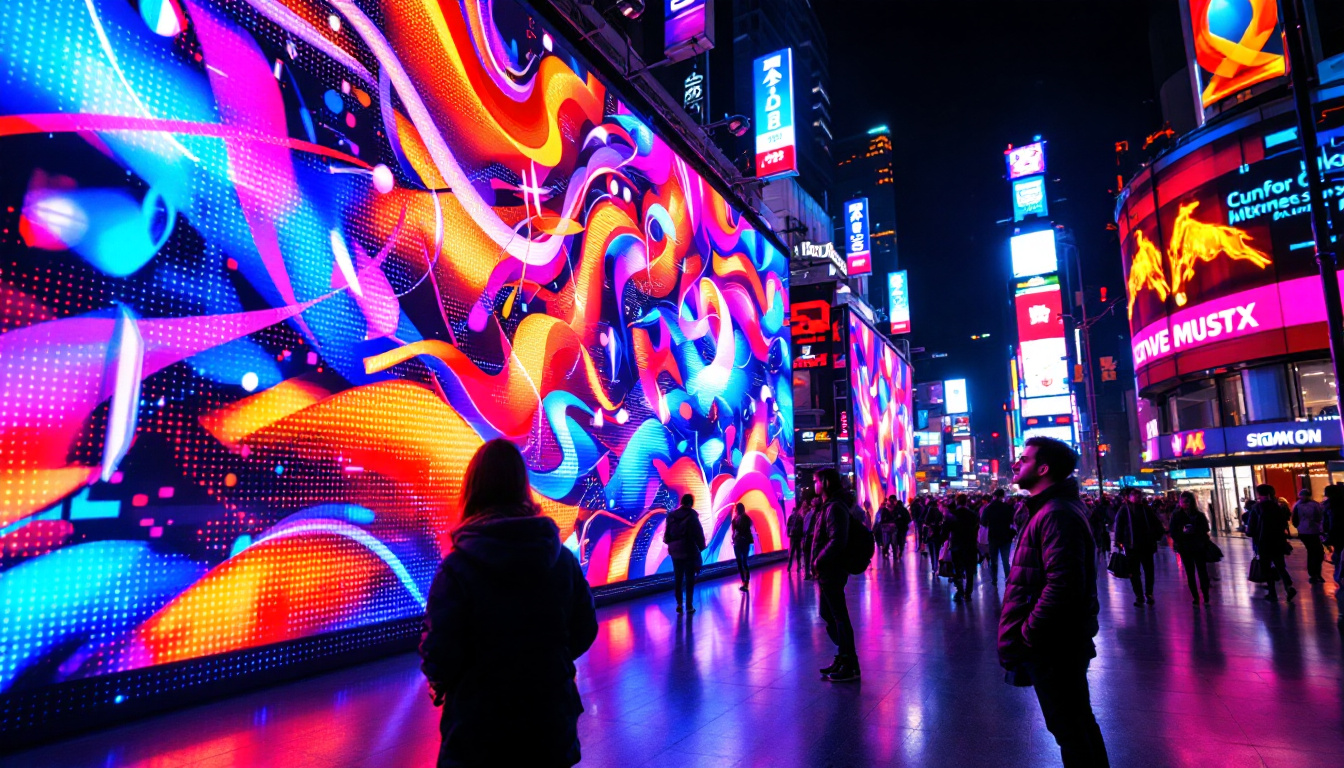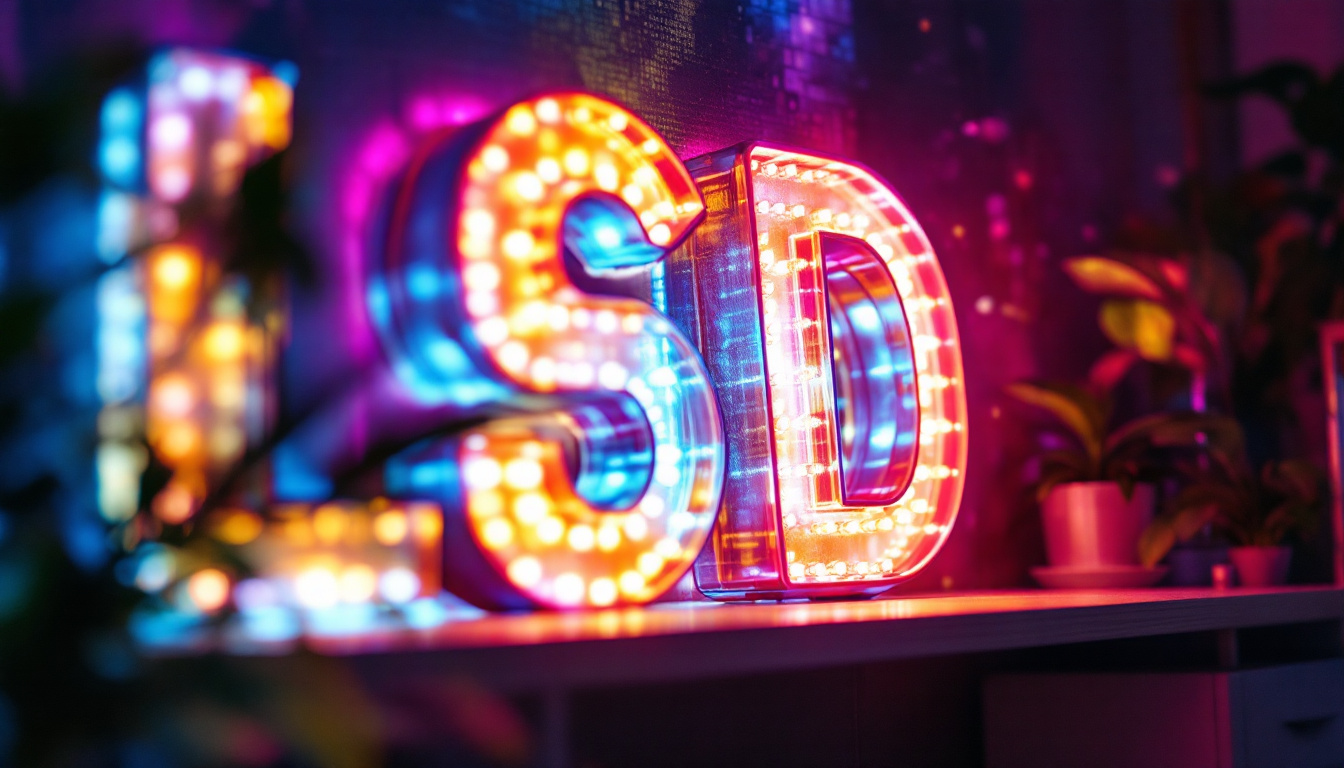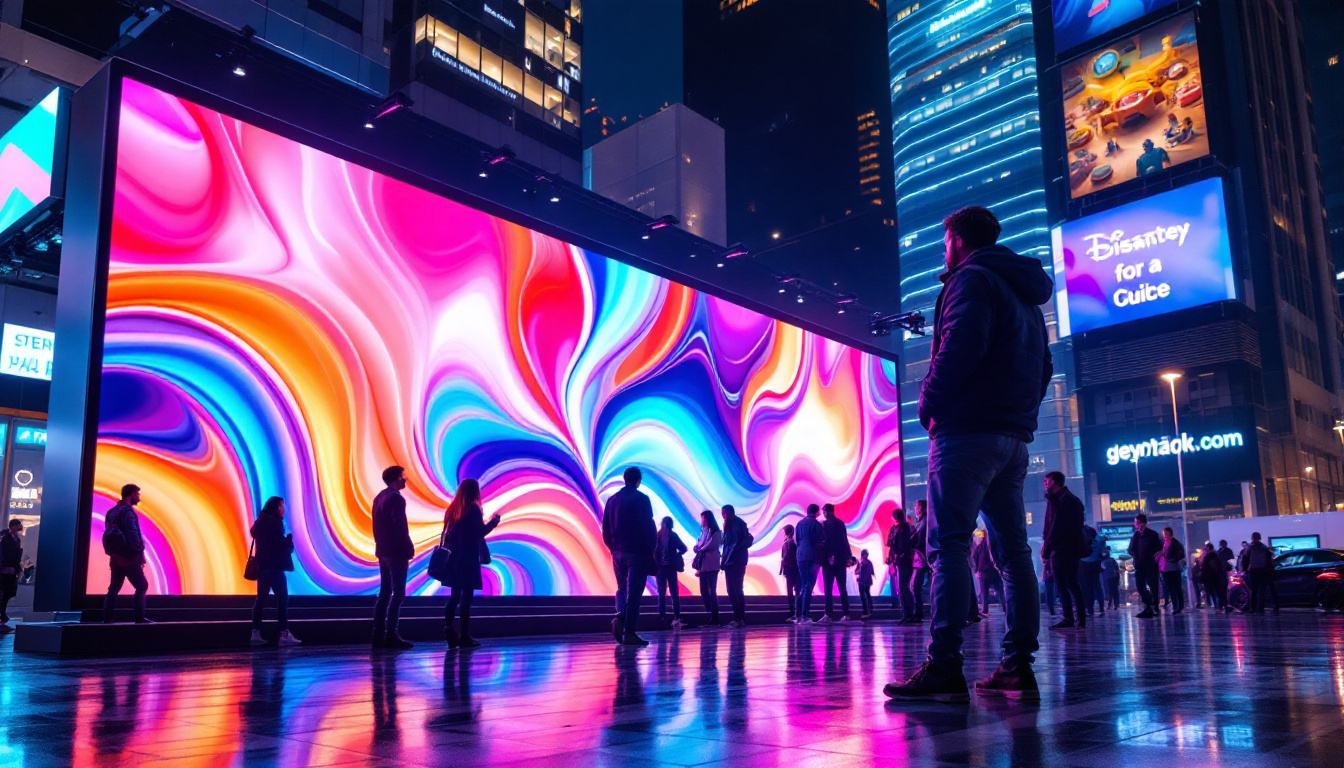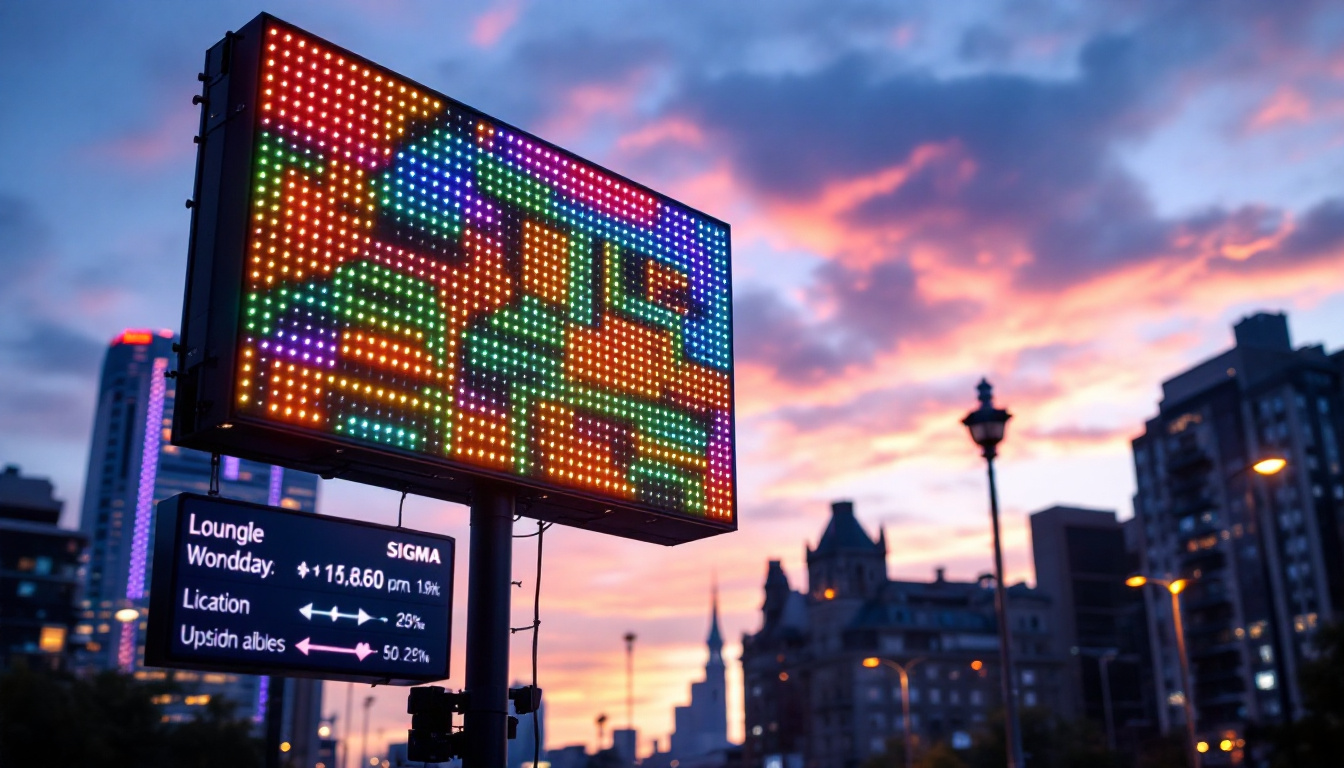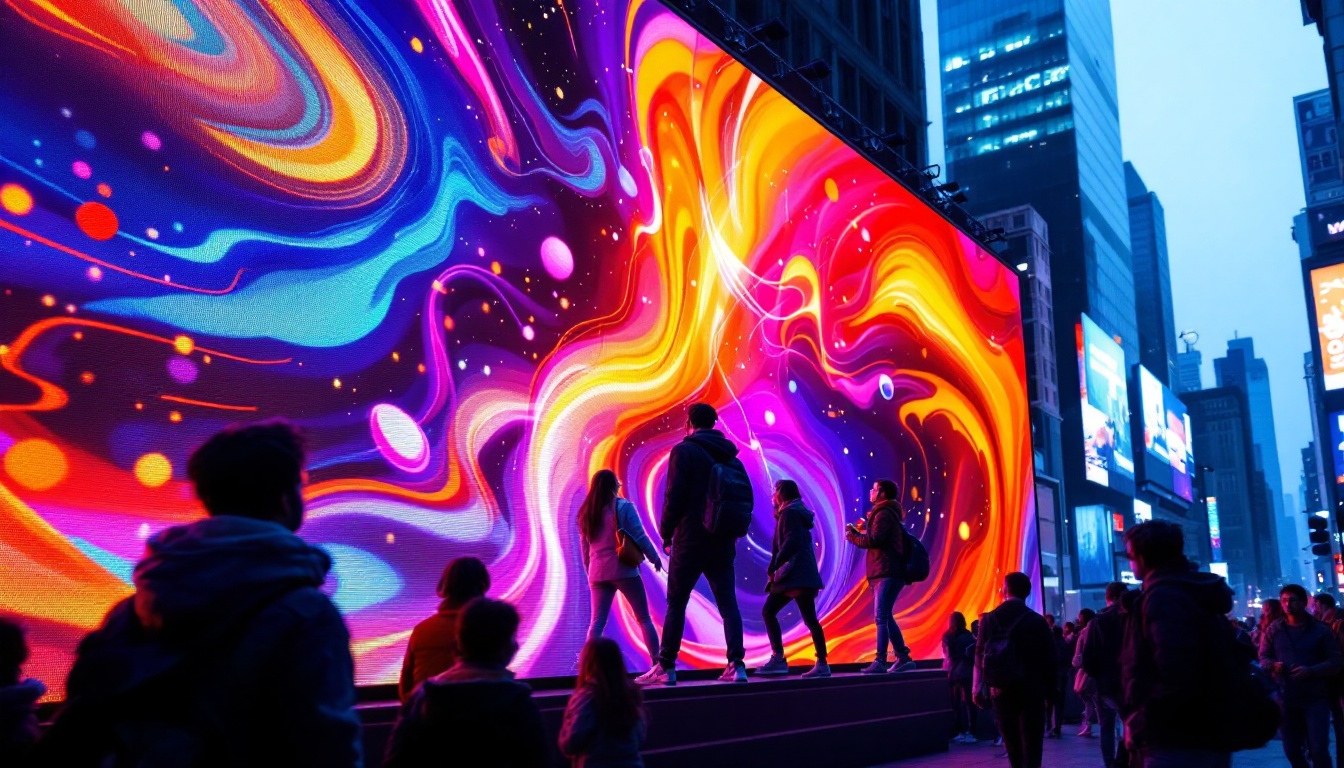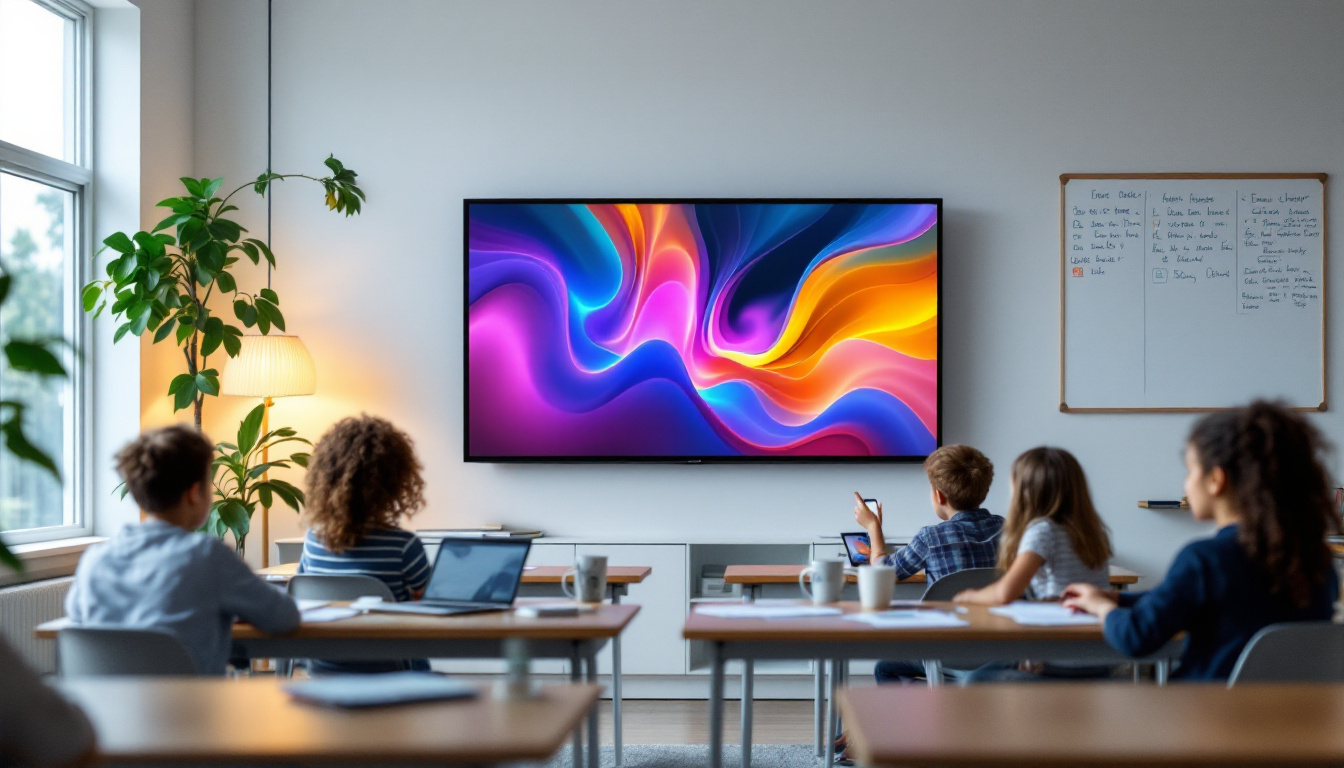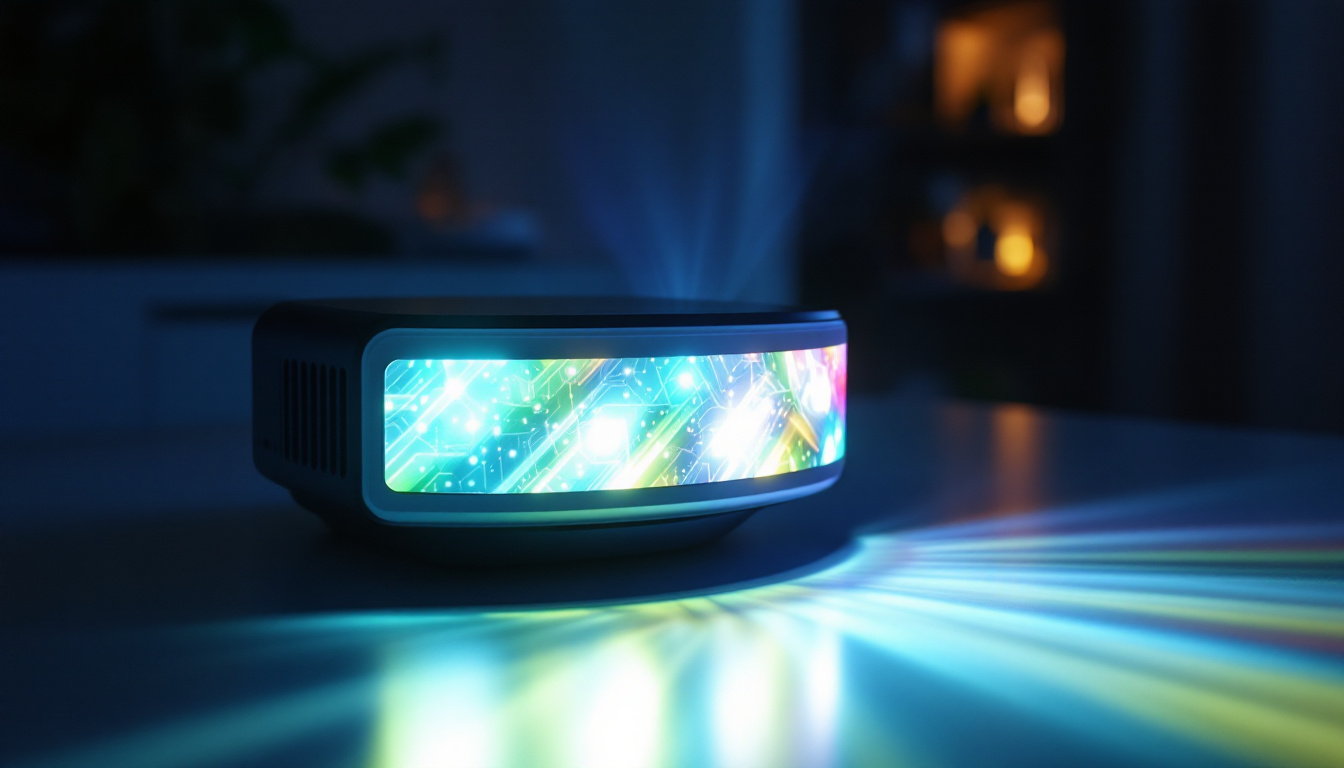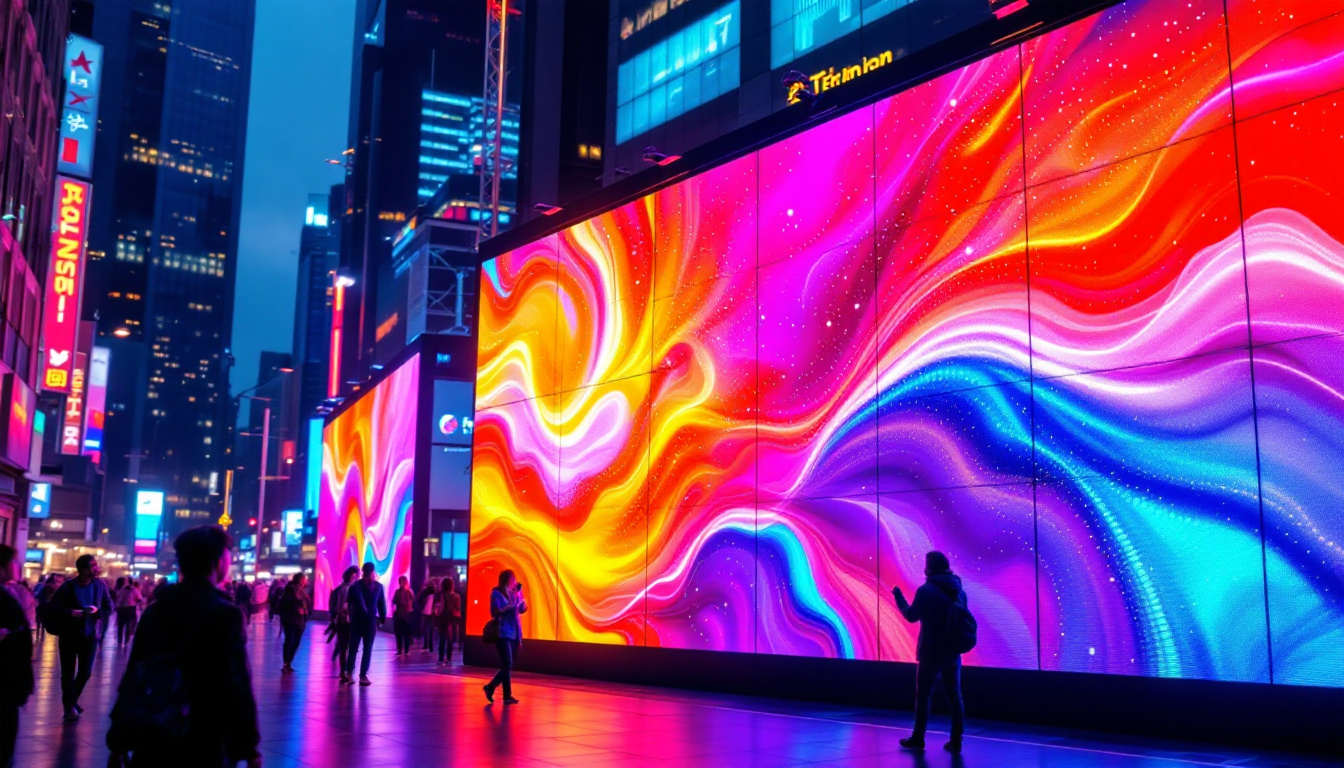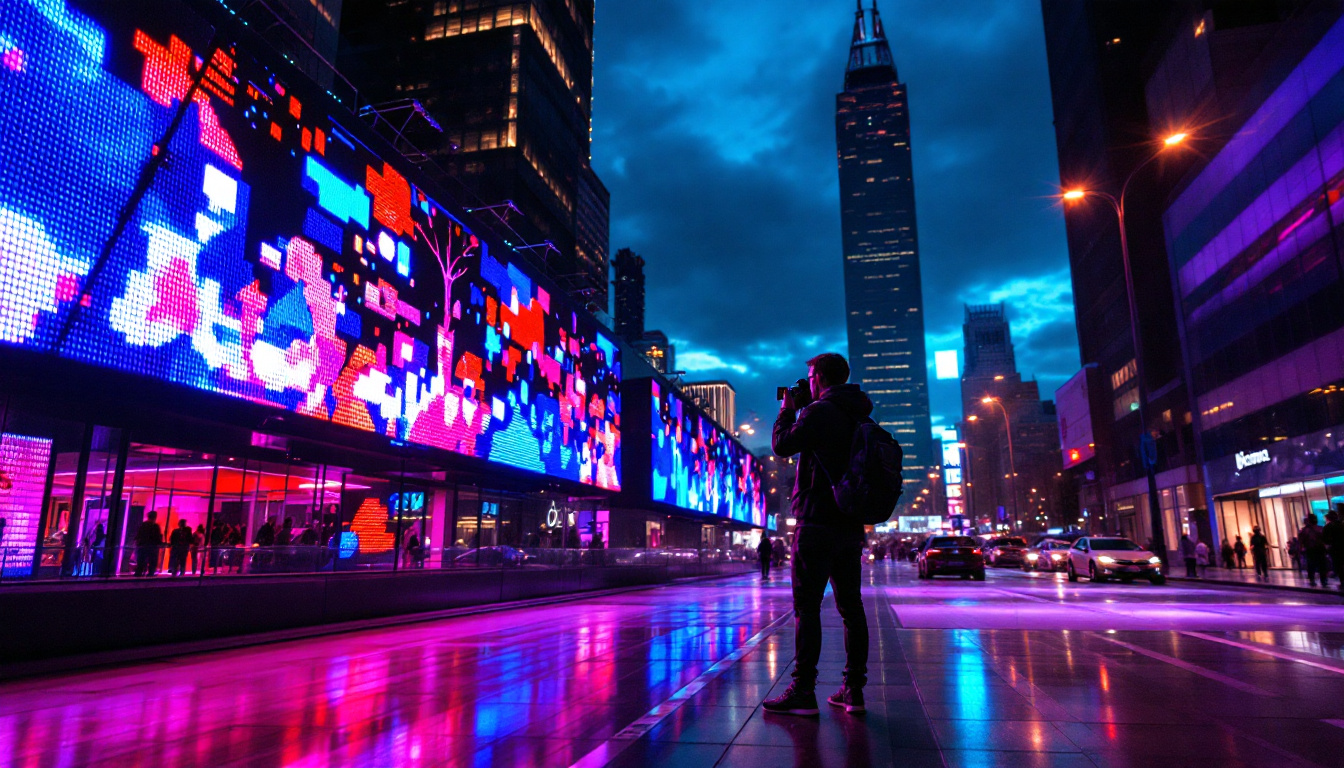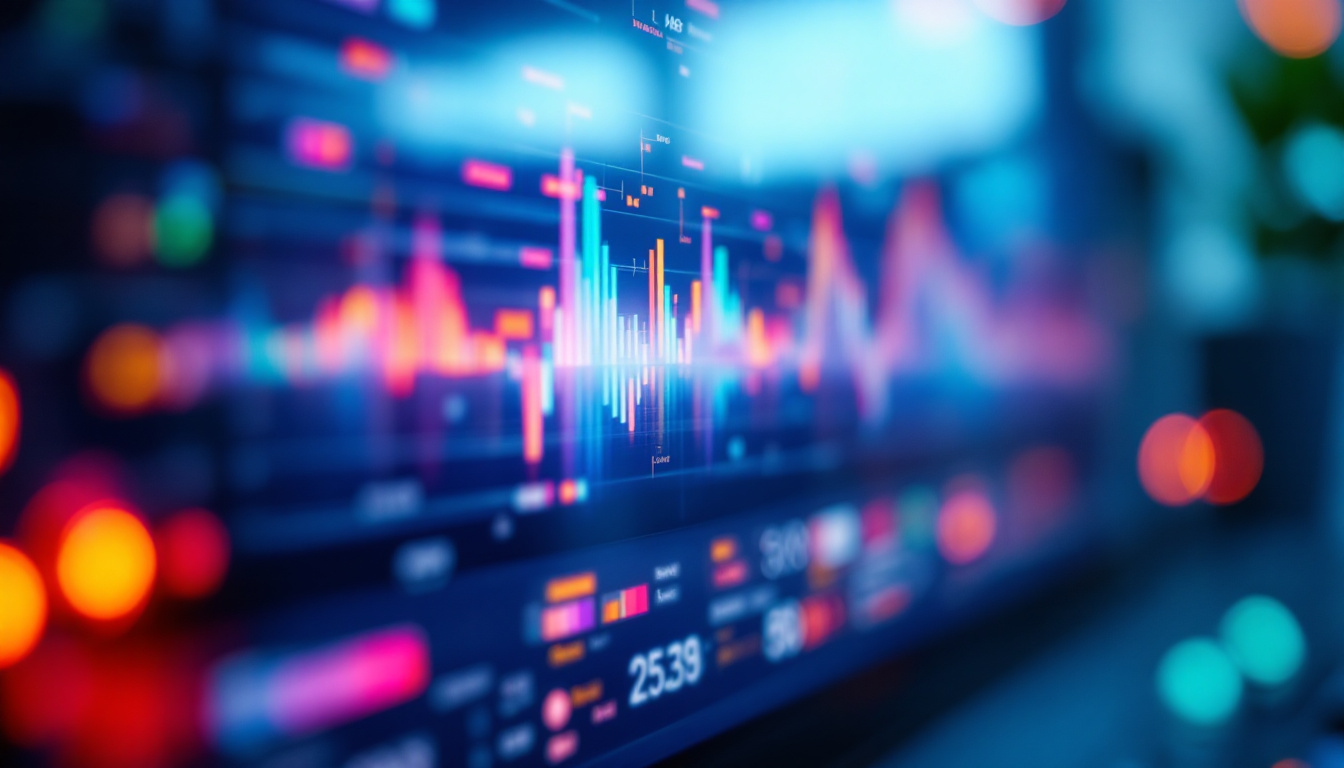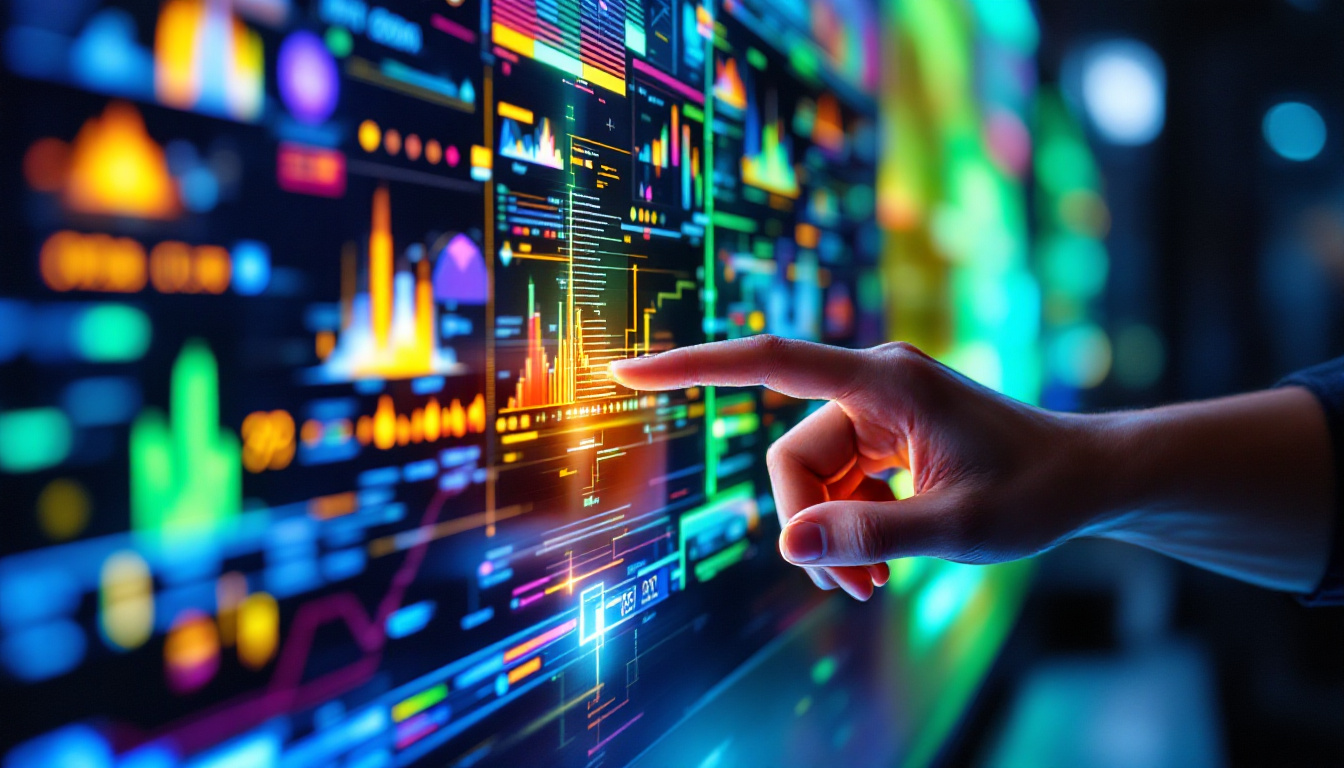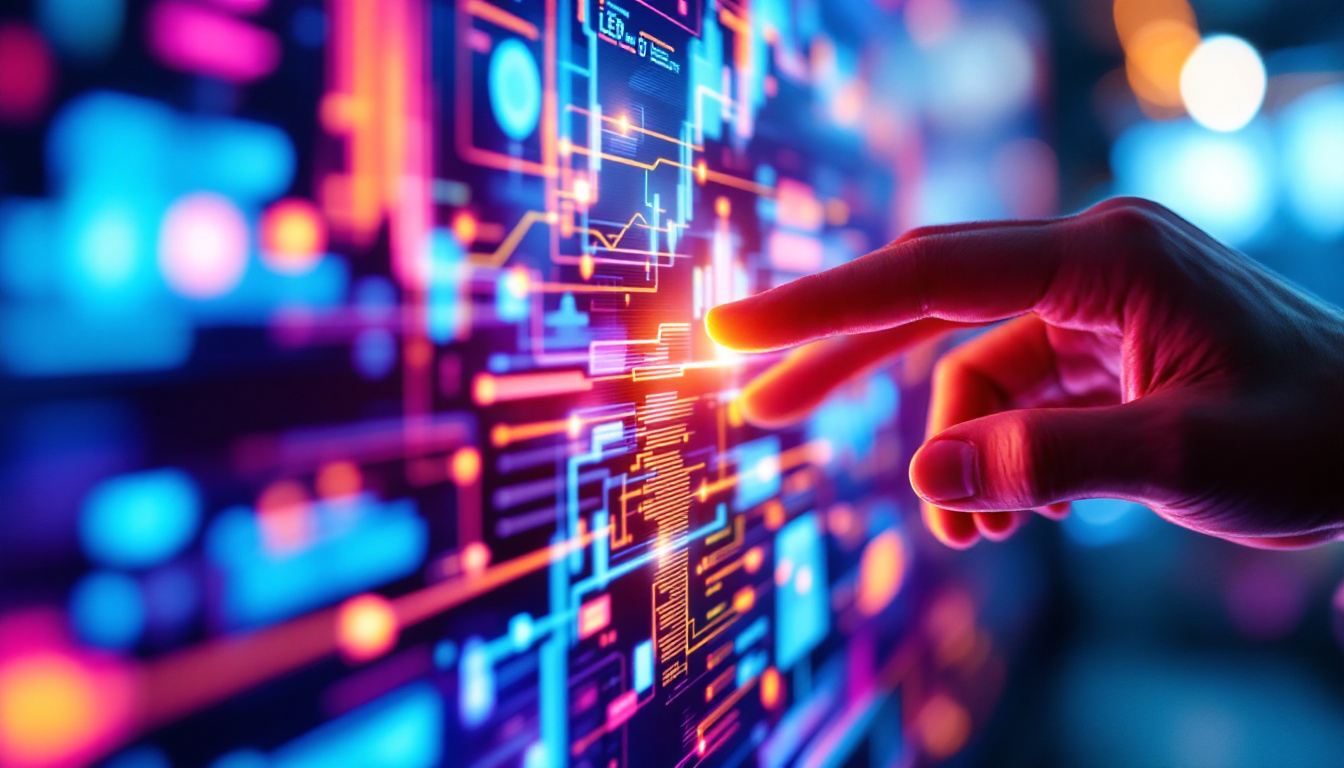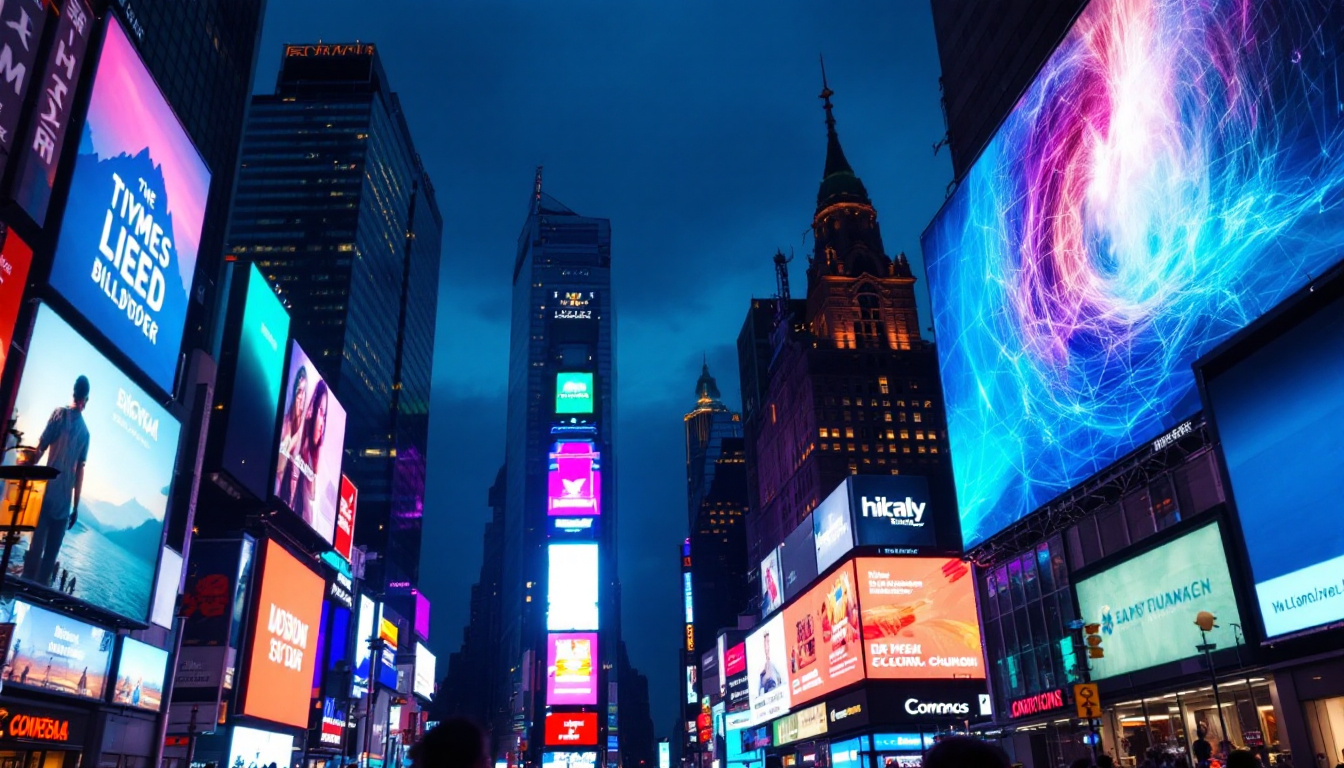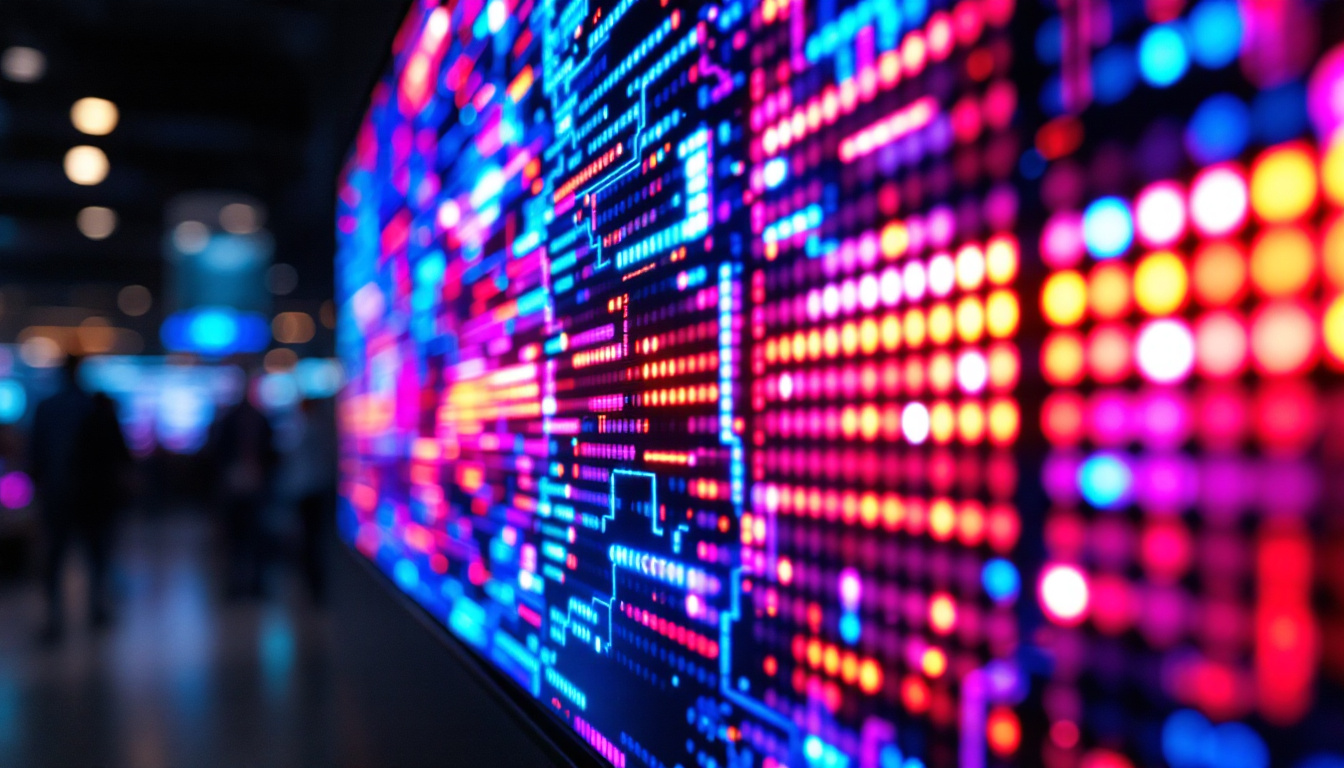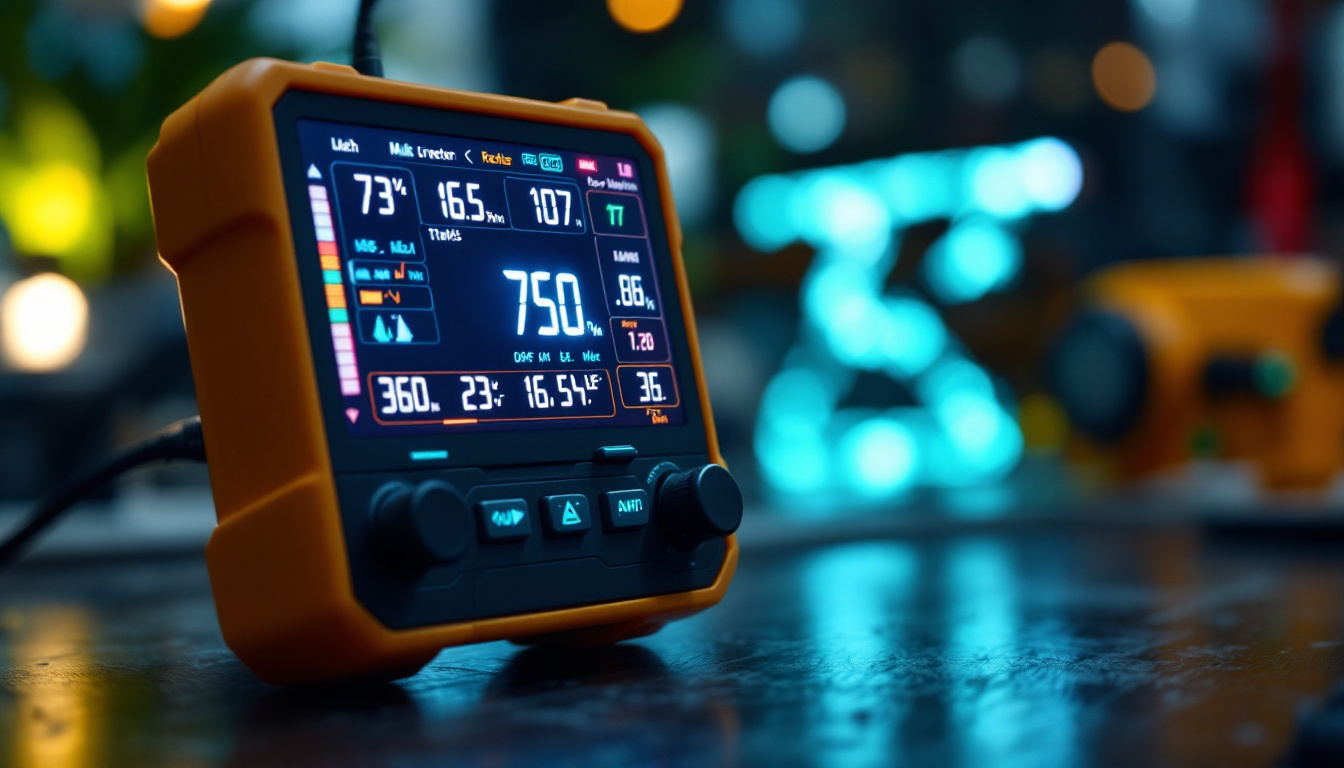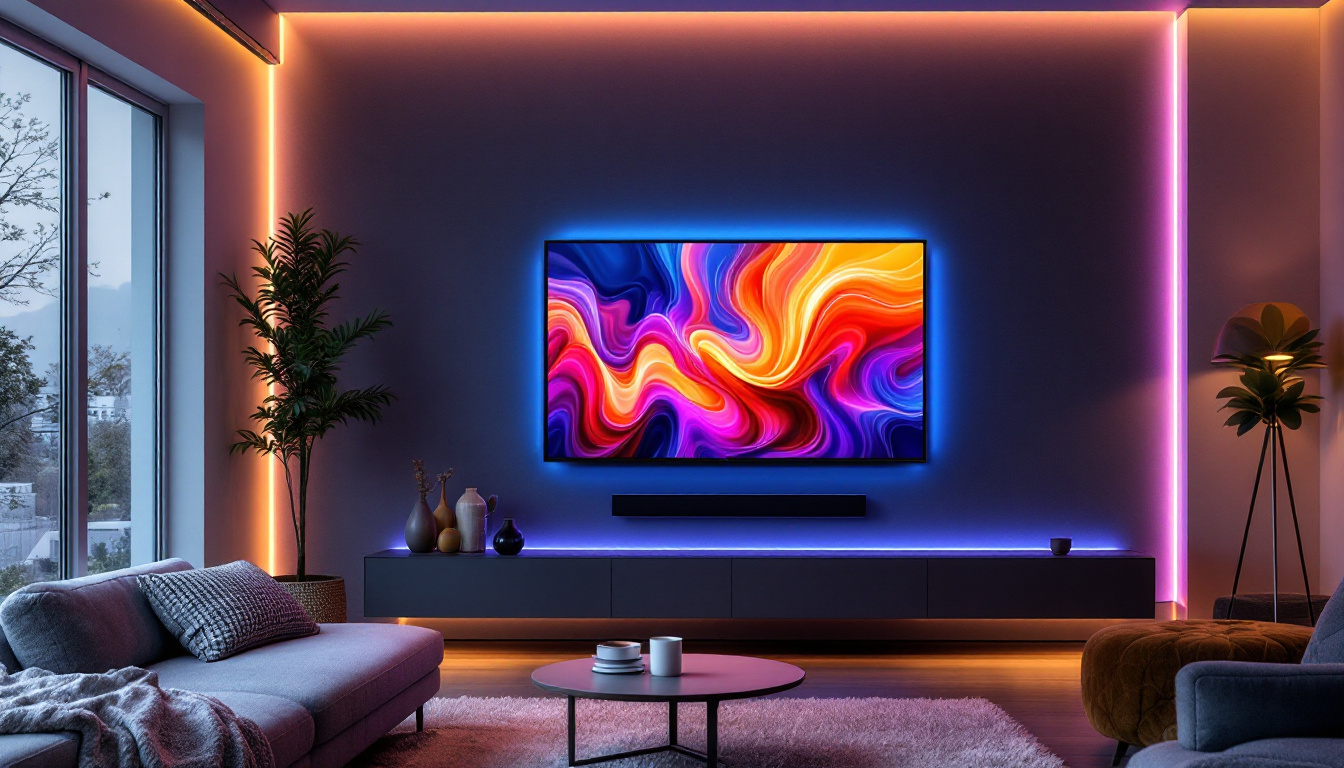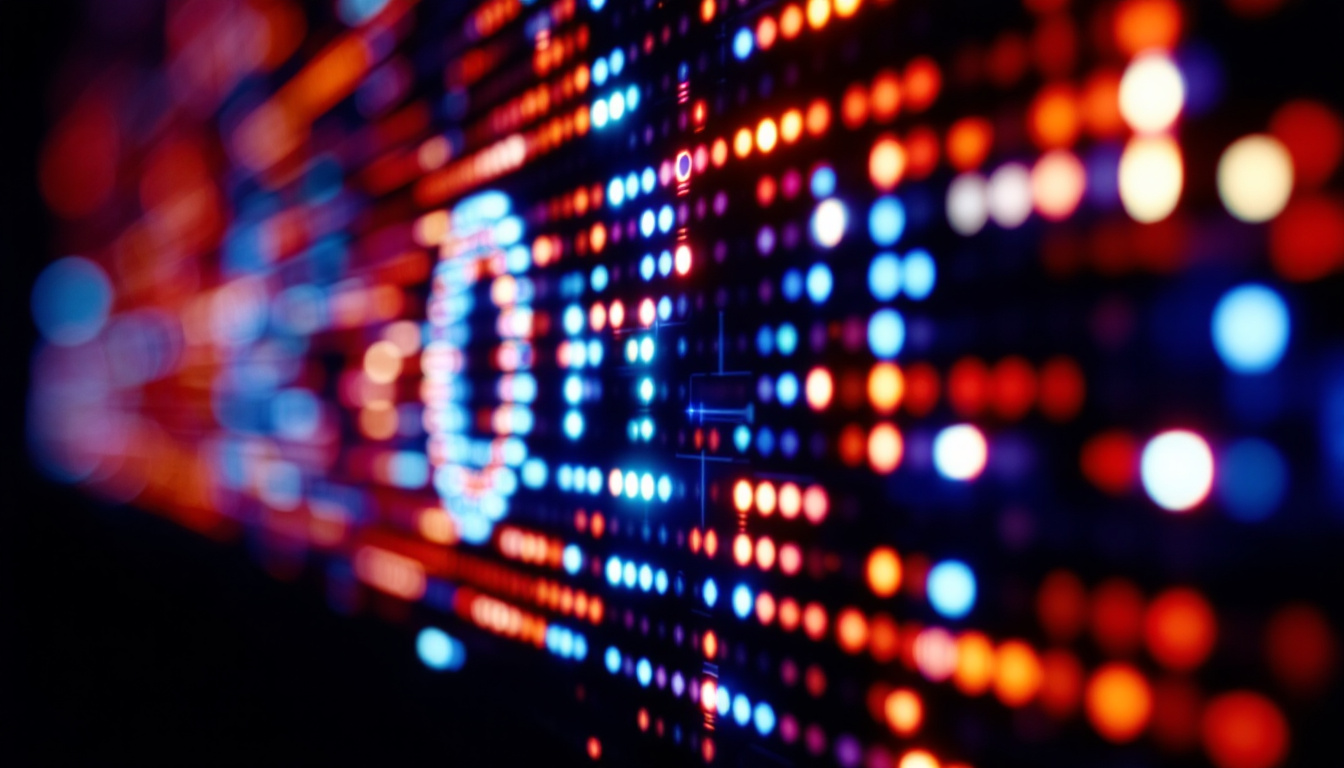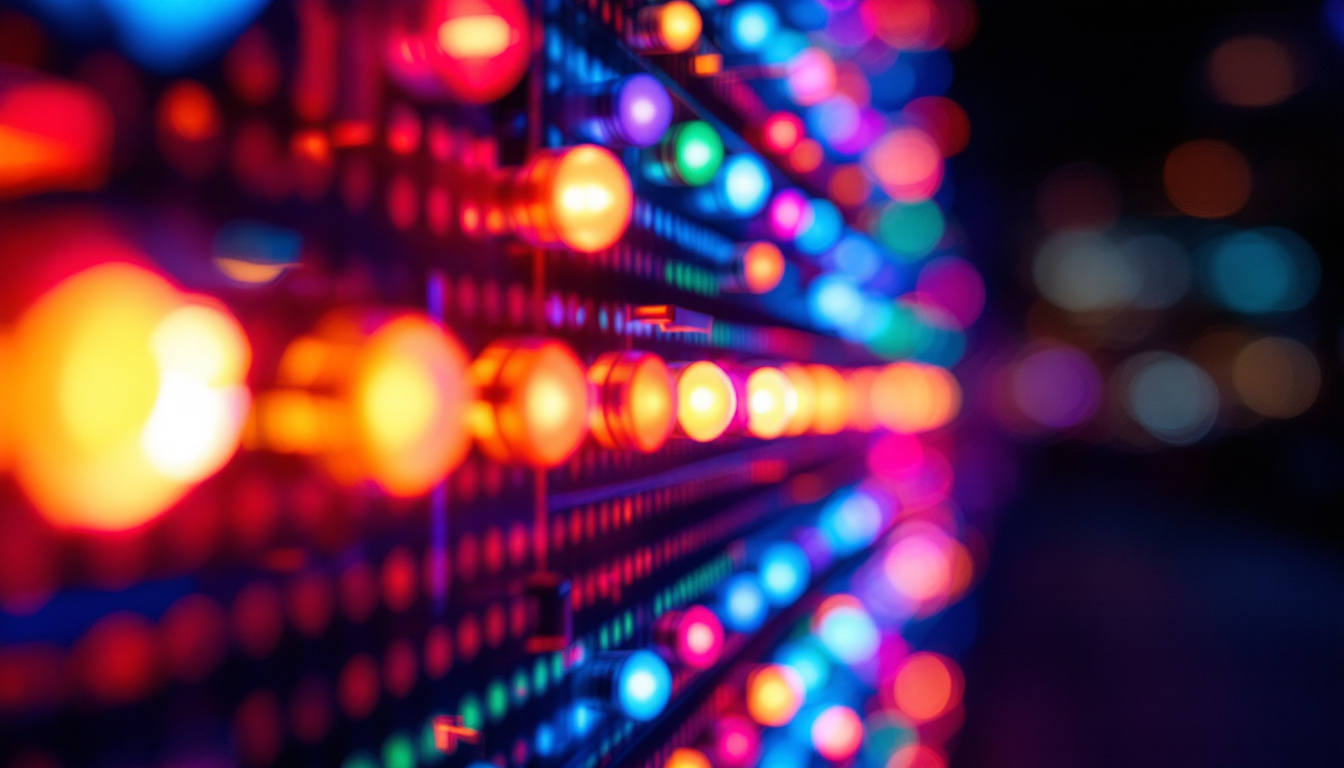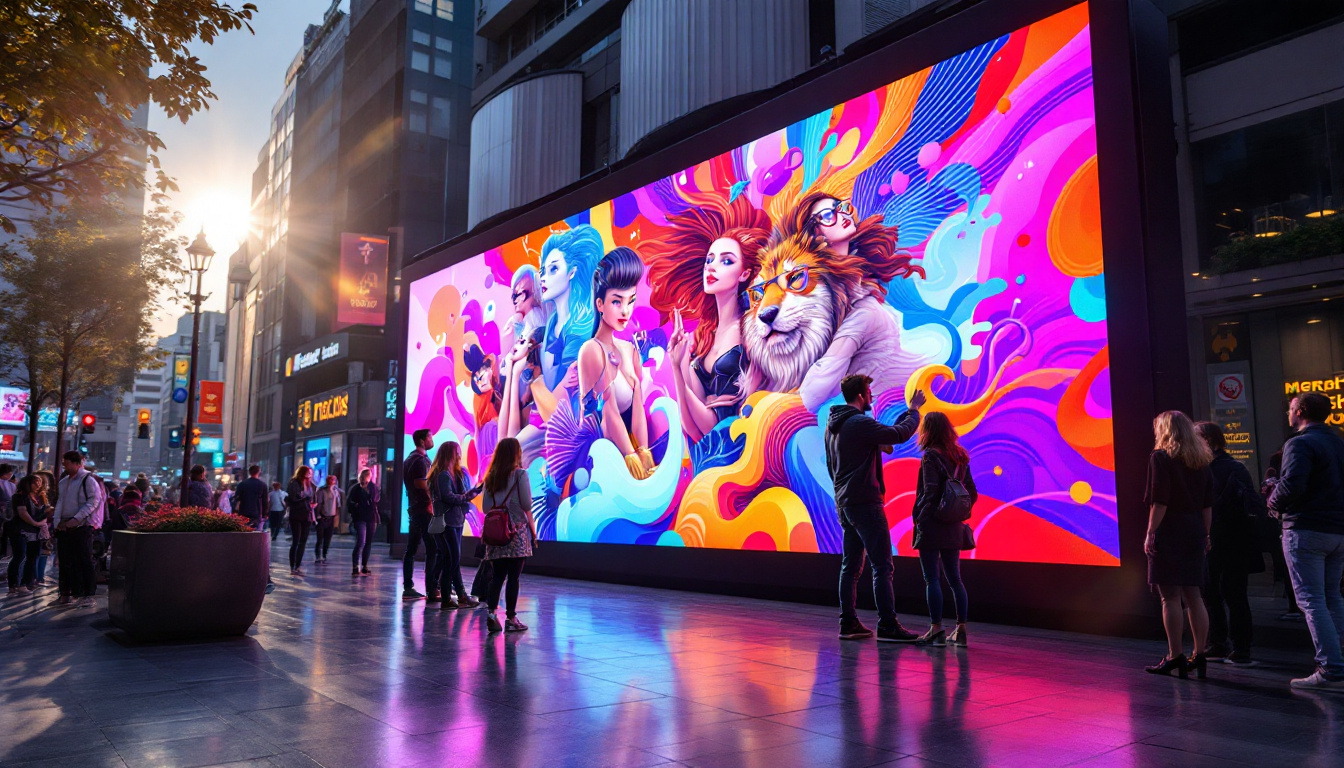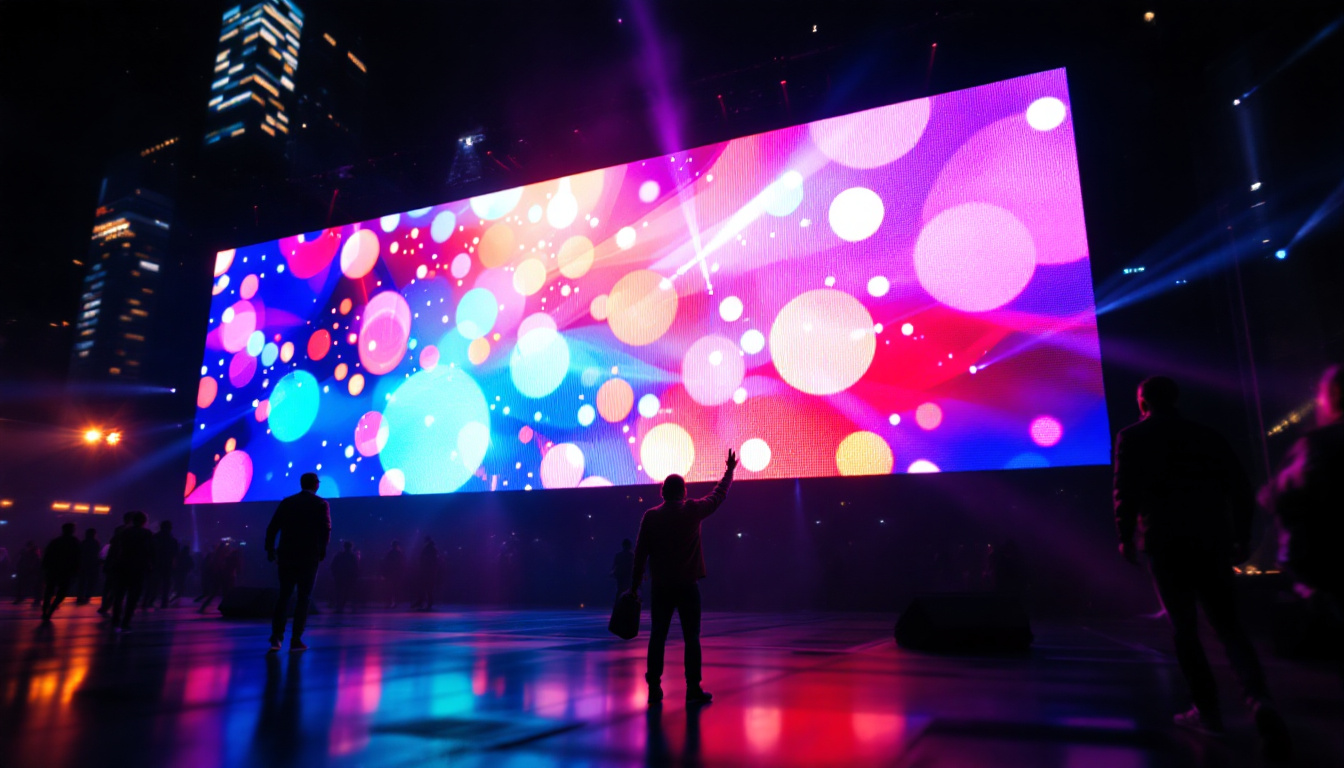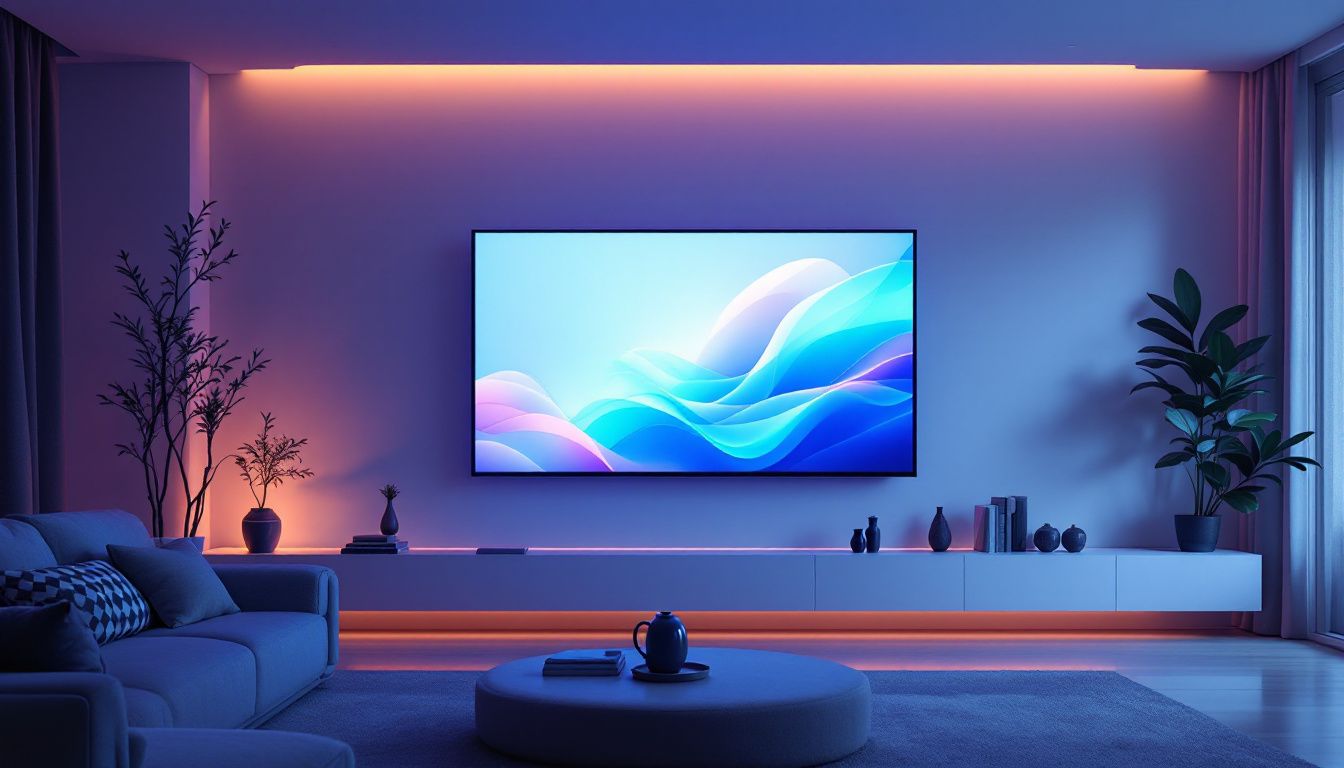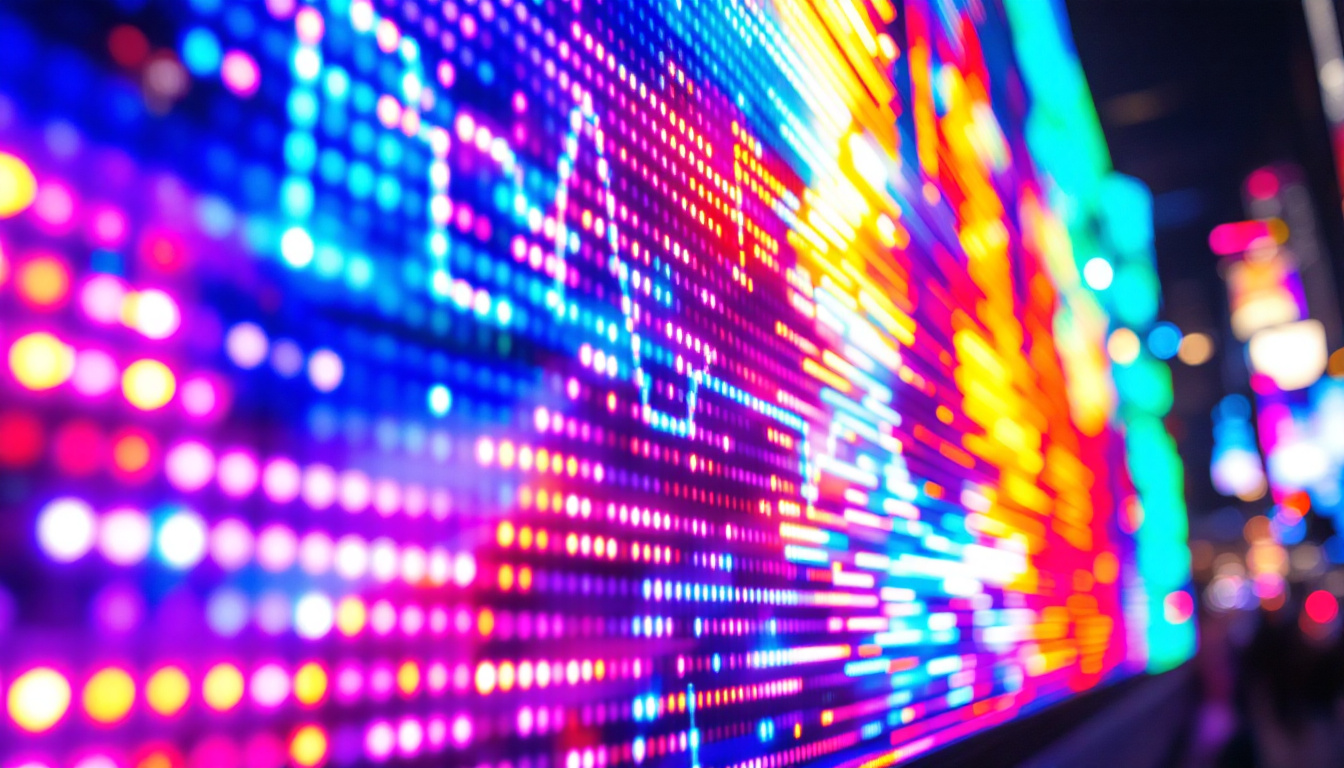Light Emitting Diodes, commonly known as LEDs, have revolutionized the way we perceive and interact with visual displays. From televisions and computer monitors to outdoor billboards, LED technology has become ubiquitous in modern society. This article delves into the definition of LED displays, their functionality, applications, and the advantages they offer over traditional display technologies.
Understanding LED Technology
LEDs are semiconductor devices that emit light when an electric current passes through them. This phenomenon is known as electroluminescence, and it forms the basis of how LED displays operate. Unlike traditional incandescent bulbs that produce light through heating a filament, LEDs are much more energy-efficient and have a longer lifespan. In fact, an LED can last up to 25 times longer than an incandescent bulb, making it a sustainable choice for both consumers and businesses alike.
The Science Behind LEDs
At the core of LED technology is the semiconductor material, typically gallium arsenide or gallium phosphide. When electrons recombine with holes in the semiconductor, energy is released in the form of photons, producing light. The color of the light emitted depends on the materials used in the semiconductor and the energy bandgap of the material. This intricate process is not only fascinating but also highlights the advanced engineering that goes into creating efficient lighting solutions.
This ability to produce light in various colors has led to the development of full-color LED displays, which combine red, green, and blue (RGB) LEDs to create a wide spectrum of colors. By adjusting the intensity of each color, an array of colors can be produced, allowing for vibrant and dynamic images. This versatility has made LEDs the preferred choice for everything from stage lighting to architectural illumination, where mood and atmosphere can be dramatically altered through color manipulation.
Types of LED Displays
LED displays can be categorized into several types, each designed for specific applications. The most common types include:
- Direct View LED Displays: These are made up of individual LED modules that create images by directly emitting light. They are often used in large outdoor billboards and digital signage, where bright visibility is crucial for attracting attention in bustling environments.
- LED Backlit Displays: These displays use LEDs to illuminate an LCD panel from behind. This technology is prevalent in televisions and computer monitors, providing better contrast and color accuracy. The backlighting allows for thinner designs while enhancing the viewing experience, making it a staple in modern electronics.
- Organic LED (OLED) Displays: A more advanced form of LED technology, OLEDs use organic compounds to produce light. They offer superior color reproduction and contrast ratios, making them popular in high-end televisions and smartphones. The flexibility of OLED technology also permits the creation of bendable screens, paving the way for innovative designs in consumer electronics.
In addition to these types, there are also specialized LED displays such as MicroLEDs, which consist of tiny, self-emitting pixels that can deliver exceptional brightness and color accuracy. This emerging technology is gaining traction for its potential to create ultra-high-definition displays that are both energy-efficient and capable of being scaled to various sizes, from small wearable devices to massive public screens. As the demand for high-quality visual experiences continues to grow, advancements in LED technology are likely to play a pivotal role in shaping the future of display systems.
Applications of LED Displays
LED displays have found applications across various sectors due to their versatility and efficiency. From entertainment to information dissemination, their impact is significant.
Advertising and Marketing
One of the most prominent uses of LED displays is in advertising. Billboards and digital signage equipped with LED technology can display vibrant advertisements that capture the attention of passersby. Their ability to change content quickly allows businesses to promote multiple products or services in a single location, maximizing exposure.
Additionally, LED displays can be programmed to show real-time information, such as news updates, weather forecasts, and social media feeds, making them an effective tool for engaging audiences.
Entertainment and Events
In the entertainment industry, LED displays are integral to concerts, sporting events, and theatrical performances. Large LED screens are often used to enhance the audience’s experience by providing close-up views of performances and displaying dynamic visuals that complement the event.
Moreover, LED technology is also employed in stage lighting and effects, creating immersive environments that captivate audiences. The flexibility of LED displays allows for creative designs that can be tailored to suit any theme or atmosphere.
Transportation and Safety
LED displays play a crucial role in transportation systems, particularly in traffic management and safety. Electronic road signs equipped with LEDs can convey important information to drivers, such as speed limits, road conditions, and detours. These displays are highly visible, even in adverse weather conditions, ensuring that critical messages are communicated effectively.
Furthermore, LED lights are increasingly used in vehicle lighting systems, enhancing visibility and safety for both drivers and pedestrians. From headlights to brake lights, LED technology provides brighter illumination while consuming less power.
Advantages of LED Displays
The adoption of LED displays comes with numerous advantages that set them apart from traditional display technologies. Understanding these benefits can help consumers and businesses make informed decisions when choosing display solutions.
Energy Efficiency
One of the standout features of LED displays is their energy efficiency. Compared to incandescent or fluorescent displays, LEDs consume significantly less power, resulting in lower electricity bills and a reduced carbon footprint. This energy efficiency is particularly beneficial for large-scale installations, such as outdoor billboards, where continuous operation is required.
Longevity and Durability
LED displays have a much longer lifespan than traditional displays. While an average LCD or plasma screen may last around 30,000 hours, LED displays can last up to 100,000 hours or more with proper maintenance. This durability makes them a cost-effective choice in the long run, as they require less frequent replacements.
Additionally, LEDs are more resistant to shock and vibration, making them suitable for various environments, including outdoor and industrial settings. This resilience ensures that LED displays can withstand the rigors of daily use without compromising performance.
High-Quality Visuals
LED displays are known for their exceptional image quality. They offer high brightness levels, excellent contrast ratios, and vibrant colors, making them ideal for various applications. Whether used for advertising, entertainment, or information dissemination, LED displays provide clear and engaging visuals that capture attention.
Furthermore, advancements in LED technology, such as HDR (High Dynamic Range) and 4K resolution, have further enhanced the visual experience, allowing for stunning imagery that rivals traditional display technologies.
Challenges and Considerations
While LED displays offer numerous advantages, there are also challenges and considerations that consumers and businesses should keep in mind when investing in this technology.
Initial Cost
One of the primary challenges associated with LED displays is their initial cost. Although prices have decreased in recent years, high-quality LED displays can still be more expensive than traditional display technologies. This upfront investment may deter some businesses, especially smaller ones, from adopting LED solutions.
However, it is essential to consider the long-term savings associated with energy efficiency and durability, which can offset the initial expenditure over time.
Heat Generation
LED displays generate heat during operation, which can affect their performance and longevity if not managed properly. Adequate cooling systems must be implemented to prevent overheating, particularly in large installations or enclosed spaces.
Proper ventilation and thermal management are crucial to ensure that LED displays operate efficiently and maintain their lifespan. This consideration is especially important in environments with high ambient temperatures.
Viewing Angles
Another factor to consider is the viewing angle of LED displays. While many LED displays offer wide viewing angles, some models may have limited visibility from extreme angles. This limitation can affect the overall effectiveness of the display, particularly in applications where multiple viewers are positioned at different angles.
Choosing the right type of LED display for specific applications can help mitigate this challenge. For instance, direct view LED displays often provide better viewing angles compared to backlit LCD displays.
The Future of LED Displays
The future of LED displays looks promising, with ongoing advancements in technology and applications. As the demand for high-quality visual experiences continues to grow, innovations in LED technology are expected to enhance performance and expand capabilities.
Smart LED Displays
With the rise of smart technology, LED displays are becoming increasingly integrated with digital platforms. Smart LED displays can connect to the internet, allowing for real-time content updates, remote management, and interactive features. This connectivity opens up new possibilities for advertising, information dissemination, and audience engagement.
Moreover, the integration of artificial intelligence (AI) can enable LED displays to analyze viewer behavior and preferences, tailoring content to maximize impact and effectiveness.
Sustainability Initiatives
As environmental concerns continue to rise, the LED industry is focusing on sustainability initiatives. Manufacturers are exploring eco-friendly materials and production processes to reduce the environmental impact of LED displays. Additionally, recycling programs for old LED displays are being implemented to promote responsible disposal and resource conservation.
These sustainability efforts not only benefit the environment but also appeal to consumers who prioritize eco-friendly practices in their purchasing decisions.
Advancements in Display Technology
Future advancements in display technology, such as MicroLED and MiniLED, are set to push the boundaries of what LED displays can achieve. These technologies offer improved brightness, contrast, and color accuracy, further enhancing the visual experience.
As research and development continue, it is likely that LED displays will become even more versatile, catering to a wider range of applications and industries.
Conclusion
LED displays have transformed the way information is presented and consumed in various sectors. Their energy efficiency, longevity, and high-quality visuals make them an attractive option for businesses and consumers alike. While challenges exist, the benefits far outweigh the drawbacks, and ongoing advancements in technology promise to enhance their capabilities further.
As LED technology continues to evolve, it is essential for stakeholders to stay informed about the latest developments and trends. Embracing LED displays not only enhances visual experiences but also contributes to a more sustainable and connected future.
Discover LumenMatrix’s Innovative LED Solutions
Ready to elevate your visual experience with the latest in LED technology? LumenMatrix is at the forefront of LED innovation, offering a wide array of cutting-edge LED display modules tailored to your needs. Whether you’re looking for an Indoor LED Wall Display, a vibrant Outdoor LED Wall Display, or specialized solutions like Vehicle LED Displays and LED Sports Displays, LumenMatrix has the expertise to bring your vision to life. Our mission is to transform visual communication, ensuring your message resonates with clarity and impact. Check out LumenMatrix LED Display Solutions today and see how we can help you create a more sustainable and connected future with our state-of-the-art LED technology.

